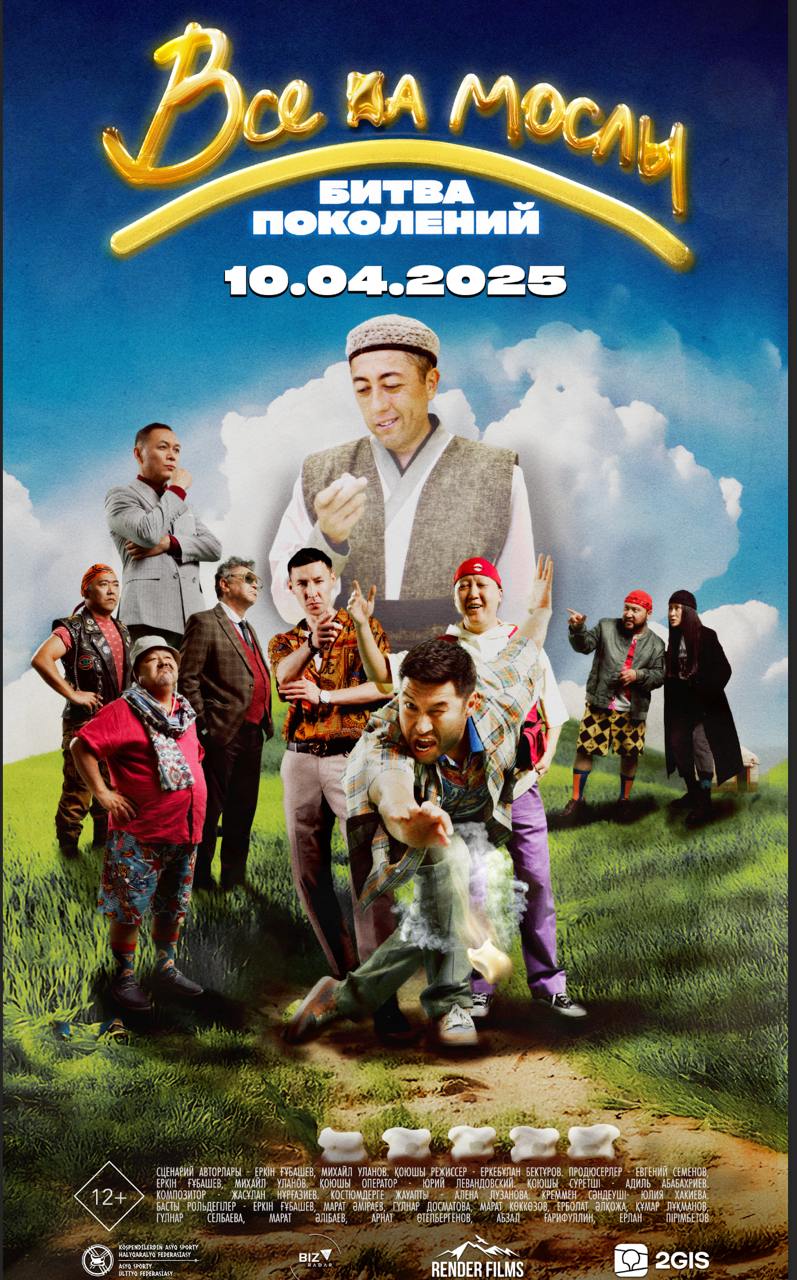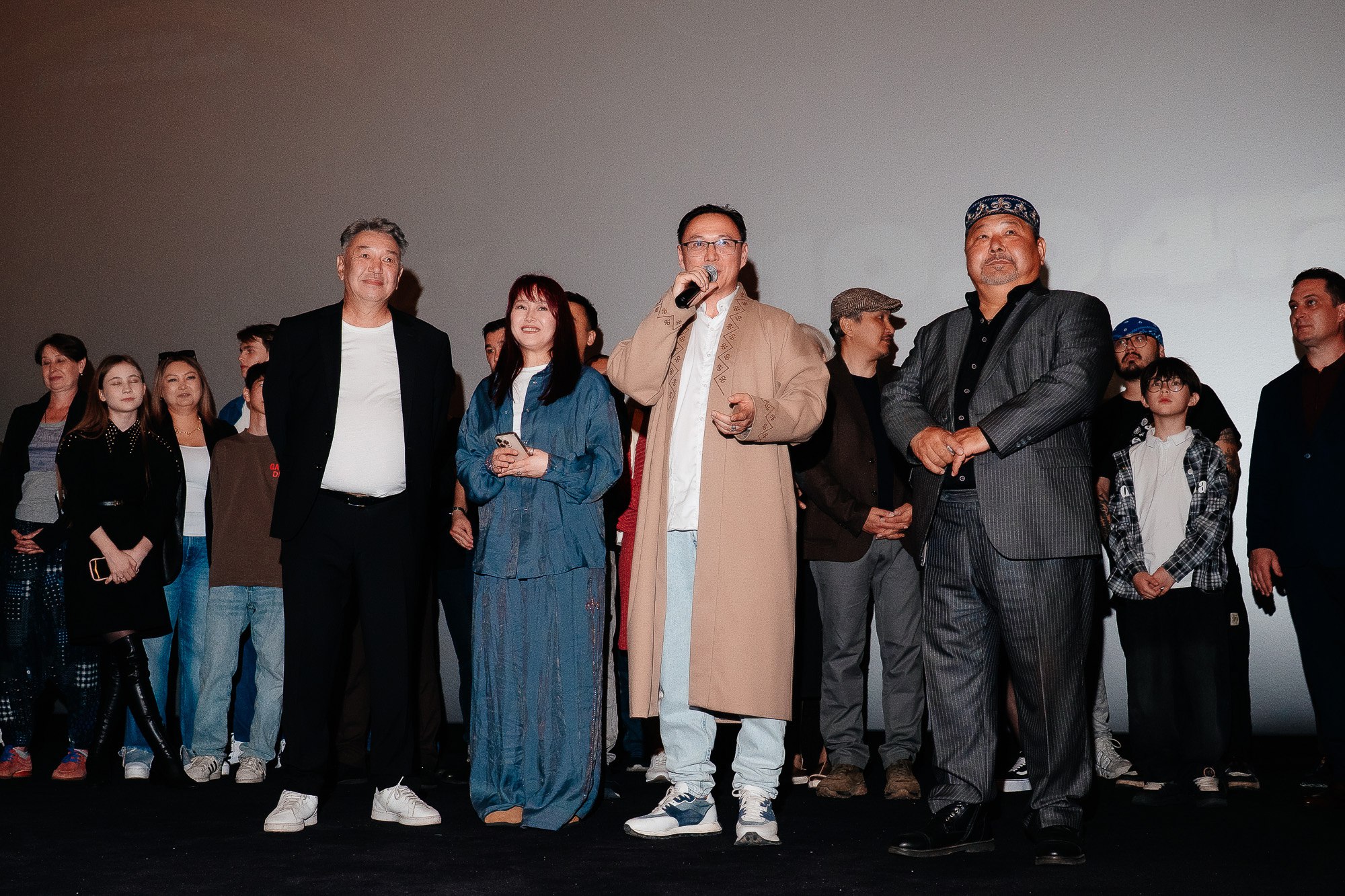At a recent press screening of the Kazakhstani fantasy comedy All on Mosles: Battle of the Generations, the audience laughed, applauded and, perhaps most tellingly, relived childhood memories. Some even left wanting to play asyki again.
The film’s creators achieved what seemed nearly impossible: they transformed an almost forgotten traditional game into a vibrant cinematic adventure appealing to both adults and children. The Times of Central Asia spoke with the film’s authors, Yerken Gubashev, Yerkebulan Bekturov, and Mikhail Ulanov, about how the project came to life, the challenges they encountered, and why asyk atu is more than just a game.
Now showing across Kazakhstan, the film centers on asyk atu, an ancient game where players aim to knock opponents’ asyk (ram’s knuckle bones) from a designated area using a special, often weighted and decorated, throwing asyk known as a sak. Popular across Soviet Kazakhstan until the 1990s, the game has since been revived by cultural activists. Today, asyk atu is included on UNESCO’s Representative List of the Intangible Cultural Heritage of Humanity.

Image: TCA, Askar Kubaizhanov
TCA: Tell us about your film. How did the idea come about?
Yerken Gubashev: I was really the initiator of the whole project. I co-wrote the script, co-produced the film, and played one of the lead roles. But more than that, it was my dream to bring asyki back and turn them into something grand.
Watching my son and his friends sitting on the street, absorbed in their phones, was tough. When we were kids, asyki was real life. We played for hours, competing, learning dexterity, patience, and respect. I started imagining a world where asyki was the number one sport, with world championships and a whole culture surrounding it. I shared the idea with Yerkebulan and Mikhail, and we couldn’t stop.
Mikhail Ulanov: We began to imagine: What if asyks could fly? What if each player had a unique technique? What if one could come to life or transform into a weapon? From this, a fantastical world emerged, rooted in tradition but filled with comedy, fantasy, and even superhero parody.
Yerkebulan Bekturov: We shaped the film to resonate with modern youth: short, dynamic scenes, sharp transitions, and vivid visuals. Yet it tells a complete story. We believe it will appeal not just to Kazakhstani audiences but also internationally. There are lots of nods to Hollywood, The Gentlemen, Kill Bill, and others, which helps bridge cultures.
TCA: The film isn’t just entertainment, is it? Is there a cultural mission here?
Yerken Gubashev: Absolutely. Our goal is to bring asyki back to the playgrounds so kids share, compete, and step away from social media. More broadly, it’s about reconnecting with our roots. Kazakh traditional culture is rich but underrepresented in cinemas. Importantly, asyki isn’t only Kazakh, it’s a Turkic game played by Uzbeks, Kyrgyz, Bashkirs, Tatars, Yakuts, and even in the Caucasus. It’s a vast cultural universe that unites Turkic peoples. Today, even the U.S., Norway, and Finland have national teams. A global championship in a decade isn’t far-fetched, asyk atu is already part of the World Nomad Games.
Mikhail Ulanov: Kazakhstan is a multiethnic country, but Kazakh culture has always been a unifying thread. Through cinema, we can remind people of the values that connect us. We’re confident the film will resonate beyond Kazakhstan.
TCA: How can your project help popularize nomadic culture and raise Kazakhstan’s international profile?
Mikhail Ulanov: Someone once told us, “Your asyks fly, your characters have superpowers.” Yes, they do! But think of kung fu movies where masters float across water or leap between treetops. It’s fantasy, but it captivates audiences and inspires martial arts practice. If we can present asyki in a visually engaging way, even with fantasy, it becomes a cultural trigger.
Yerken Gubashev: Take beshbarmak, for example. Someone tries it, enjoys it, then wants to learn more about our language, culture, and traditions. I grew up on karate films and soon wanted to know how the Japanese lived. Today, visual culture, movies, streaming, screens, is our main portal into new worlds.
Mikhail Ulanov: A friend’s daughter started with Japanese manga, ended up learning the language, and now studies in Japan. It all began with a picture. Why not imagine that someone watches our film and decides to visit Kazakhstan, to play asyki, explore the culture, maybe even meet a real-life Mugalim, the guardian of ancient asyk atu secrets.
TCA: But for the film to have such an impact, it must be seen; that’s a question of distribution, right?
Yerken Gubashev: Exactly. The hardest part is getting it to audiences. Kazakhstan’s film market is highly commercialized. If a film doesn’t turn a quick profit, it vanishes. Even culturally valuable projects lose out to those with bigger advertising budgets. It’s not about quality, it’s about reach. Many great films are simply crowded out.
Take Adilkhan Yerzhanov. His work is celebrated at Cannes, Berlin, and Venice. In France, audiences gave him standing ovations. But in Kazakhstan, silence. No commercial success. It’s a Van Gogh paradox: unrecognized at home, lauded abroad. We don’t want our films to follow that path.

Image: TCA,Askar Kubaizhanov
TCA: What challenges did you face in getting your film to screens?
Yerkebulan Bekturov: Enormous ones. Local distributors compete intensely, which hurts filmmakers. Projects backed by major corporations get resources, advertising, and guaranteed screenings. Independent films like ours, made from the heart but without financial muscle, often never reach the public.
TCA: Still, Kazakh cinema seems to be in a period of growth. What’s fueling this renaissance?
Yerkebulan Bekturov: It’s amazing. Ten years ago, this would’ve been unthinkable. Last year saw 92 domestic releases; over 100 are expected this year. Interestingly, state funding has dropped below 5%; most films are privately financed. Two major players now dominate: Kinopark/Tiger Films, with strong infrastructure, and social media, which mobilizes online fanbases to draw viewers from streaming to the cinema. It’s a successful model that’s catching international attention.
TCA: How essential is government support for national cinema?
Yerkebulan Bekturov: It’s not just about money. Government support can also mean regulation. Even with private cinema networks, the state could help by negotiating quotas for cultural or festival films, ensuring they get decent time slots and reach audiences. Production is booming, but cinema space is limited. The fight for screens is fierce.
Mikhail Ulanov: State investment in infrastructure, not just as a financier, but as a regulator and facilitator, would be a game-changer. Especially in regions where cinemas are scarce. Cinema should entertain, yes, but also educate, inspire, and shape cultural taste, not by force, but by offering alternatives.









